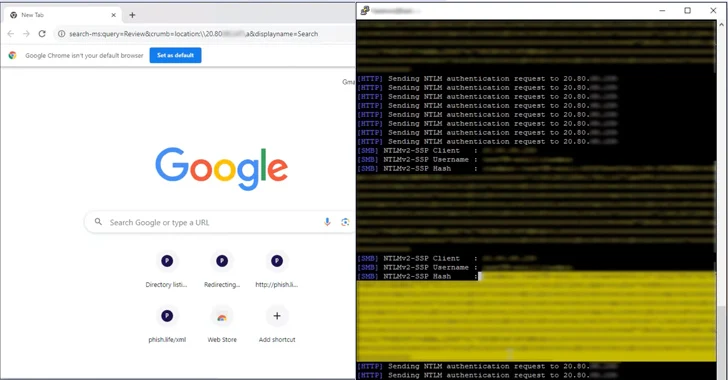
A now-patched security flaw in Microsoft Outlook could be exploited by threat actors to access NT LAN Manager (NTLM) v2 hashed passwords when opening a specially crafted file.
The issue, tracked as CVE-2023-35636 (CVSS score: 6.5), was addressed by the tech giant as part of its Patch Tuesday updates for December 2023.
“In an email attack scenario, an attacker could exploit the vulnerability by sending the specially crafted file to the user and convincing the user to open the file,” Microsoft said in an advisory released last month.
In a web-based attack scenario, an attacker could host a website (or leverage a compromised website that accepts or hosts user-provided content) containing a specially crafted file designed to exploit the vulnerability.”
Put differently, the adversary would have to convince users to click a link, either embedded in a phishing email or sent via an instant message, and then deceive them into opening the file in question.
CVE-2023-35636 is rooted in the calendar-sharing function in the Outlook email application, wherein a malicious email message is created by inserting two headers “Content-Class” and “x-sharing-config-url” with crafted values in order to expose a victim’s NTLM hash during authentication.
Varonis security researcher Dolev Taler, who has been credited with discovering and reporting the bug, said NTLM hashes could be leaked by leveraging Windows Performance Analyzer (WPA) and Windows File Explorer. These two attack methods, however, remain unpatched.
“What makes this interesting is that WPA attempts to authenticate using NTLM v2 over the open web,” Taler said.
“Usually, NTLM v2 should be used when attempting to authenticate against internal IP-address-based services. However, when the NTLM v2 hash is passing through the open internet, it is vulnerable to relay and offline brute-force attacks.”
The disclosure comes as Check Point revealed a case of “forced authentication” that could be weaponized to leak a Windows user’s NTLM tokens by tricking a victim into opening a rogue Microsoft Access file.
Microsoft, in October 2023, announced plans to discontinue NTLM in Windows 11 in favor of Kerberos for improved security owing to the fact that it does not support cryptographic methods and is susceptible to relay attacks.










